How do I continue to teach fabric collage when all my classes for this year have been cancelled or postponed?
That’s the question that Tom and I have been pondering since the pandemic began. It didn’t take too long really, to come up with some ideas. We’d been considering online options for some time, though as more of a sideline to my teaching, not as a replacement. The problem was we didn’t know if any of our ideas would work.
Well, we’ve tried a couple already. The verdict? So far, so good.
Our Thursday Night in My Studio Live! presentations have been a hit, with more than 70 attendees each night. Those same sessions are then available as recorded versions to view on demand a couple days later by Saturday morning.
And recently I introduced Fabric Collage Coaching.
The annotated photo above of Sarah Mikolavich’s pup Dallas, is an example of a project that Sarah had planned on beginning at a class this year. When the class was cancelled, she became my first online coaching client, and is helping me realize that, yes, this is a viable alternative to in-person teaching.
Click button below for more information about my Fabric Collage Coaching sessions.
How does Fabric Collage Coaching work?
Fabric Collage Coaching sessions are 45-minute live private consultations via Zoom. This one-on-one feedback is most like being in one of my classes. When I’m teaching fabric collage in-person, most of my time is spent working one-on-one with students (though in a class of many, there isn’t the luxury of 45 minutes each). Since I don’t use templates, even when the entire class is tackling the same subject—say a fish or a butterfly—each collage is unique. So each student needs individualized instruction. Or coaching.
For my online coaching sessions, since I’m not there to walk over and see the student’s project, I have them send good quality photographs for me to view and make notes on. Typically they will send the original photo of the image they are re-creating, an overall of the their collage, and detail shots of the areas of particular concern for them.
As you’ll see in the examples below, having these photos to work with on the screen allows me to employ annotation tools built into the Zoom software, which allows me to make notes right on the image—circling, highlighting, making connections between different parts of the image, all while comparing the collage in-progress with the original photographic image.
You might think these students would be distracted by needing to take notes during our session. Not so. Each session is recorded so the student can view and re-view (and pause and rewind) my feedback as often as they want. They never have to worry about missing something I said or did.
From two-time “coachee” Sarah:
I just love this ability to listen and watch your instruction over and over. It helps me since I don’t work on these projects daily with work and life. Thank goodness you video the coaching session because I have watched it probably 6 times so far. Very, very helpful. —Sarah Mikolavich
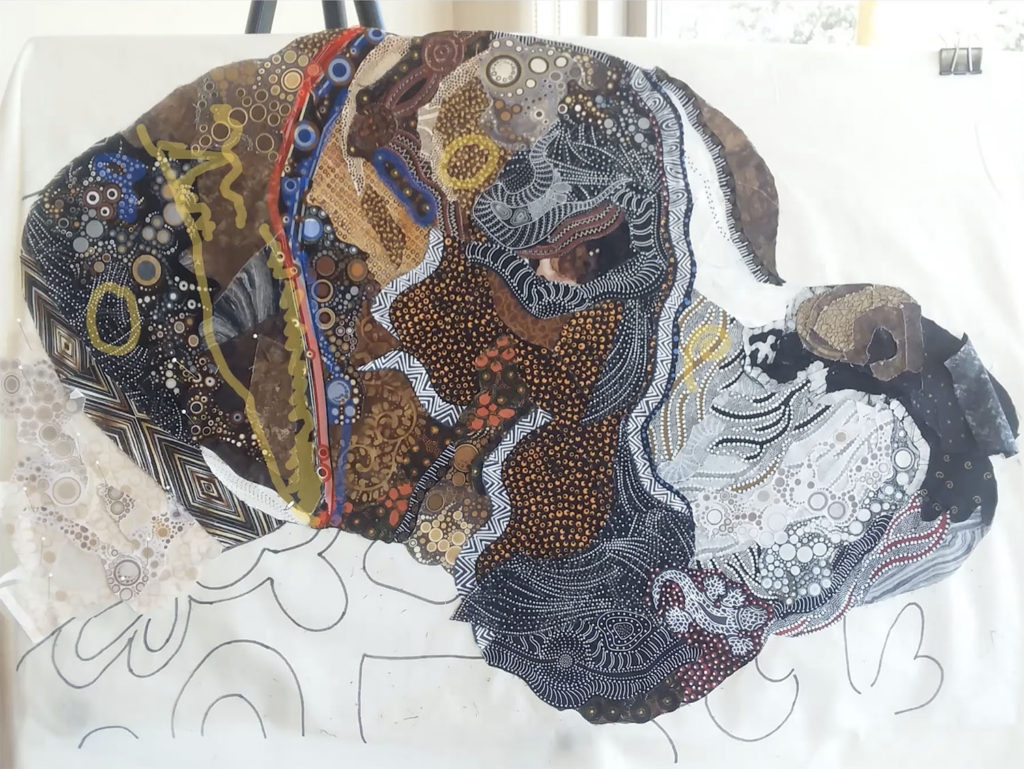
Included in each session is a follow-up email. Once the student has incorporated the changes we discussed, they send me new photos of their project (such as Austin’s current progress below), which I then respond to via reply email.
Why Do I Like Fabric Collage Coaching?
Since we began looking into online options for teaching fabric collage, I had wondered if I would ever find a way that approached the efficiency and accuracy of in-person teaching.
I feel like Fabric Collage Coaching is as close as I will get. It might even be better in one way—at an in-person class you don’t have a recording to review later!
The coaching sessions I have done so far have been very rewarding to me. I really feel like I’m giving good information and helping these folks progress in their projects. After 45 minutes these students have been ready to say, “That’s good for now!” It’s like I’m offering them another helping of bean salad when they’ve already eaten all they can eat and need to push away from the table.
Still not sure how Fabric Collage Coaching works? Let’s look at some other examples of coaching sessions.
Mary McKay’s Coaching Session
Mary McKay has attended an in-person class (Madeline Island School of the Arts, January 2019) and owns my Fabric Collage Online Master Class Manual. Mary has also been very involved in the private Facebook group for Patreon supporters, where she both gives useful feedback and receives it on her quilts. You may have seen her completed fabric collage of a moose in this Finish Line post.
Mary has definitely been bitten by the Fabric Collage bug, and has recently completed (with feedback through that Facebook group) a fanciful quilt of an alpaca.
I’m so proud of the work and progress that Mary is putting into each of her quilts, and she felt that now she was ready for a bigger challenge: a quilt of her grandson. It’s an image she would have been working on in the two classes she was signed up for this year. Instead, we’re meeting online.
Mary sent me the photo below and her first draft of a tracing that would be her pattern for the piece.
Since this was a new quilt, Mary requested feedback in two areas. First, she wanted to be sure the pattern she had created was accurate before transferring it to the foundation fabric and starting to place fabrics. Second, she wanted help identifying the fabric range of colors and values she would use in the piece.
These were both sensible goals, and both were achievable in a 45-minute session.
The drawing was a good beginning, but together we came up with ways the tracing could be refined to better help her recreate the original image.
This is where we started in our time together. Below is a video excerpt of the session where I help her define the cheek, which needed a bit more curve in my opinion:
Also, as we were discussing the tracing, we examined how she defined the light and dark values in his face and upper torso. I felt they needed to be both simplified and a little more precise. Here’s a closeup of the annotations I made to both the photo and her tracing.
With these instructions in mind, Mary went back to the drawing board (literally) and made a second draft of her tracing. She then sent me a picture of this for her followup email.
Here’s the second draft:
Notice how much better defined the facial features are: the nose, mouth, teeth, and ear. The highlights and shadows on his shoulders have been simplified. We felt the eyes needed a little more definition so she went on to do another draft. But overall, it’s a big improvement, and just about ready for her to progress to the collage itself.
During our session, Mary also wanted to have me look at her initial choice of fabrics for this piece. In the video below I point out what I think are good choices for her portrait quilt. Notice how helpful it is to compare the fabrics to the black and white version of the image when choosing the correct values for highlights and shadows.
So you can see, using the tools that allow me to draw right on the image, I can be very precise and specific with my suggestions using this online method of teaching.
Dawn Erikson’s Coaching Session
Dawn began her fabric collage journey by joining the Master Class Facebook group after purchasing the Master Class Manual. The “practice” for her first class with me later that year, is included in this Finish Line post. Since beginning that butterfly quilt, she has taken my Maine retreat classes in both Portland, ME, in 2018 and Harpswell, ME, in October of last year. So Dawn has some experience in fabric collage.
The moose you see below is the collage she began at last year’s retreat.
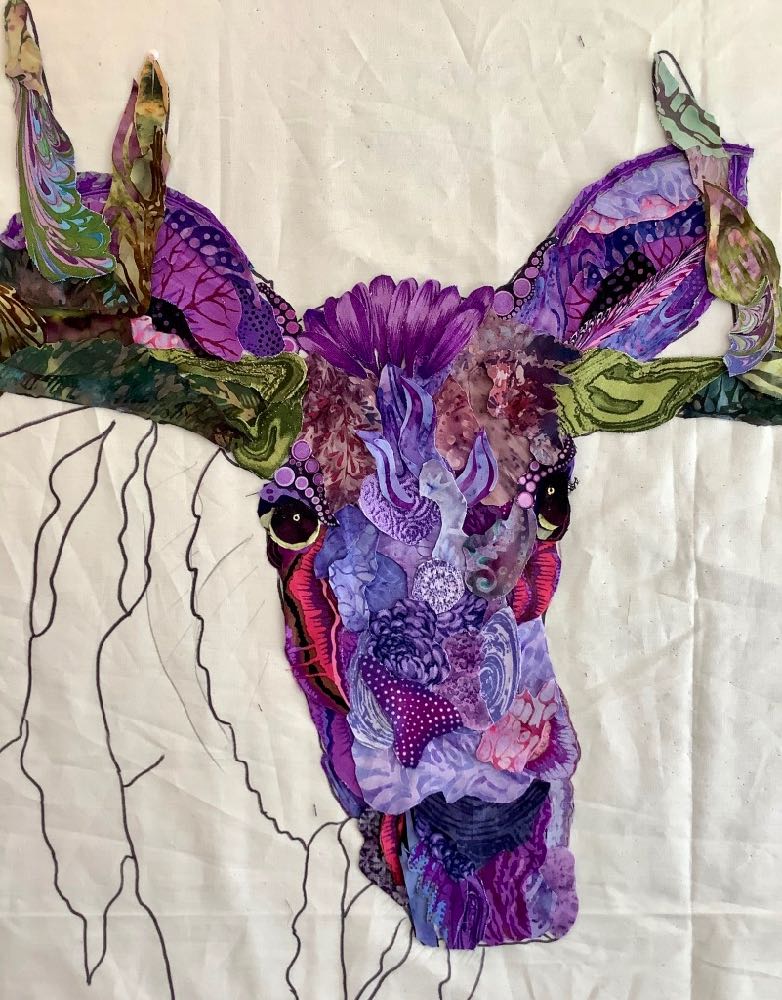
Dawn got a huge amount of very impressive work done on her own after she got home (photo below). Eventually she got to a point where she knew a few things weren’t quite right, but wasn’t sure how to pinpoint and solve them, so she contacted Tom and I about the online feedback.
Here’s how Dawn describes what she hoped to get out of our coaching session:
Overall, I am happy with the face and antlers, but the body has been quite a challenge. It has had many renditions and I have learned with each different rendition but I am ready to move on and feel good about completing this amazing project. So that’s where I am and really looking forward to some one on one coaching.
That’s the other thing I try to give my “coachees,” some confidence and enthusiasm to move ahead to completion.
In Dawn’s case, the areas she identified as giving her grief were the snout and the body. I agreed with her, the snout appeared a bit “skewed.” It needed to be squared off more.
Referring to the original photo image was crucial here, as I was able to isolate shapes based on value in the photo and then indicate where those same shapes should be found on the in-progress collage.
We then went on to discuss the body of the moose—her main concern. Below, in the screen capture from the video, you can see the end product of our discussion. There’s a lot of annotations and information combined in that photo, but as a video it’s built upon step-by-step.
When Dawn gets back to working on this moose, she’ll be able to refer to the video in order to capture the train of thought that got us to this final point. From what Dawn has already achieved, I’m sure this will be one fantastic beast when she’s done.
A Solution
Using video conferencing as a way to teach fabric collage has been a relief. I know not everyone will want or be able to use it. Many who are able to come to a class will still prefer that in-person option when classes start up again. But if they just can’t wait, or for those who are unable to attend my in-person classes at all—possibly for time, location, or money constraints—I’m glad to have this effective option to offer.
For more information about Fabric Collage Coaching or to schedule a session, click the button below.
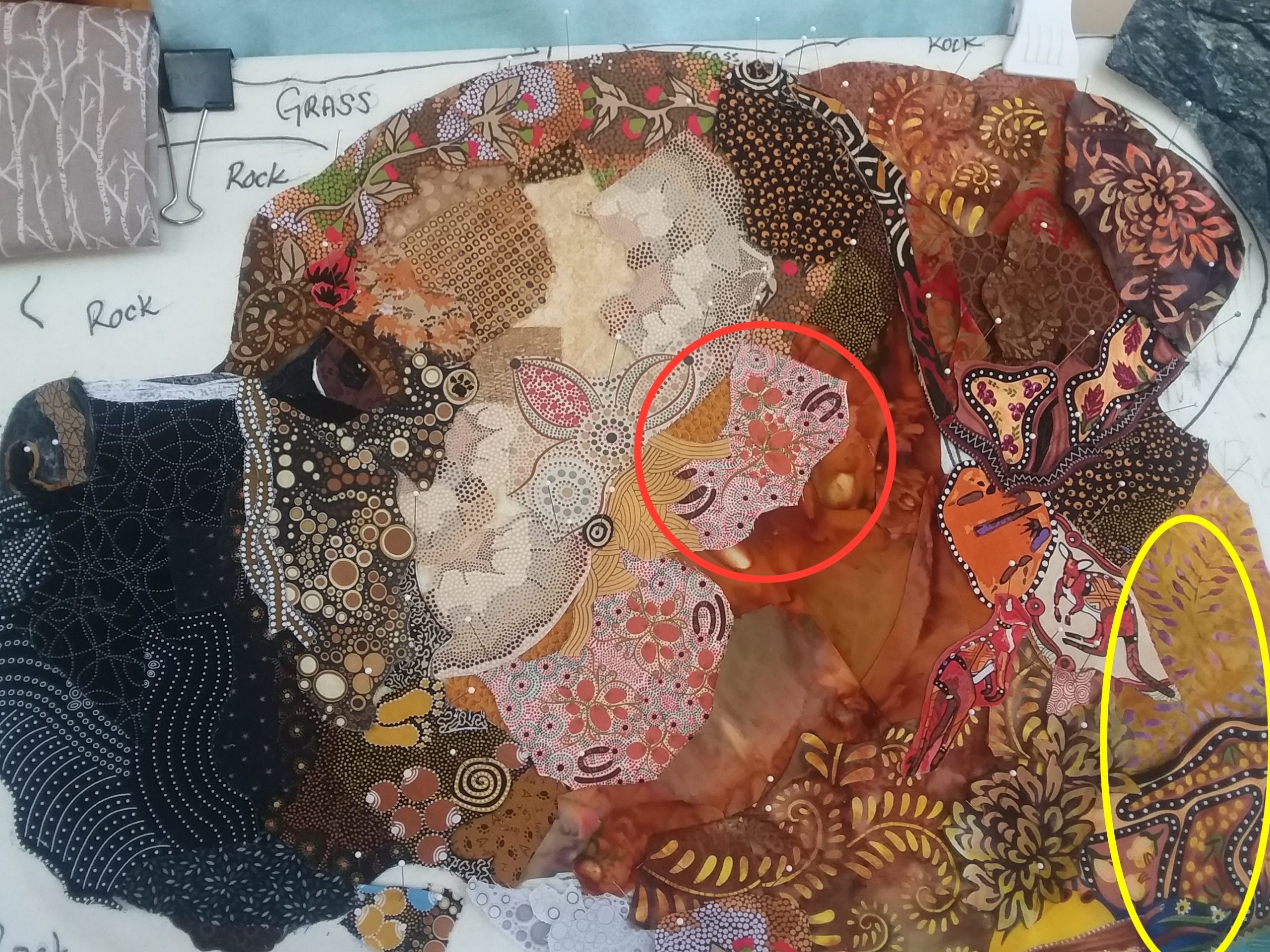
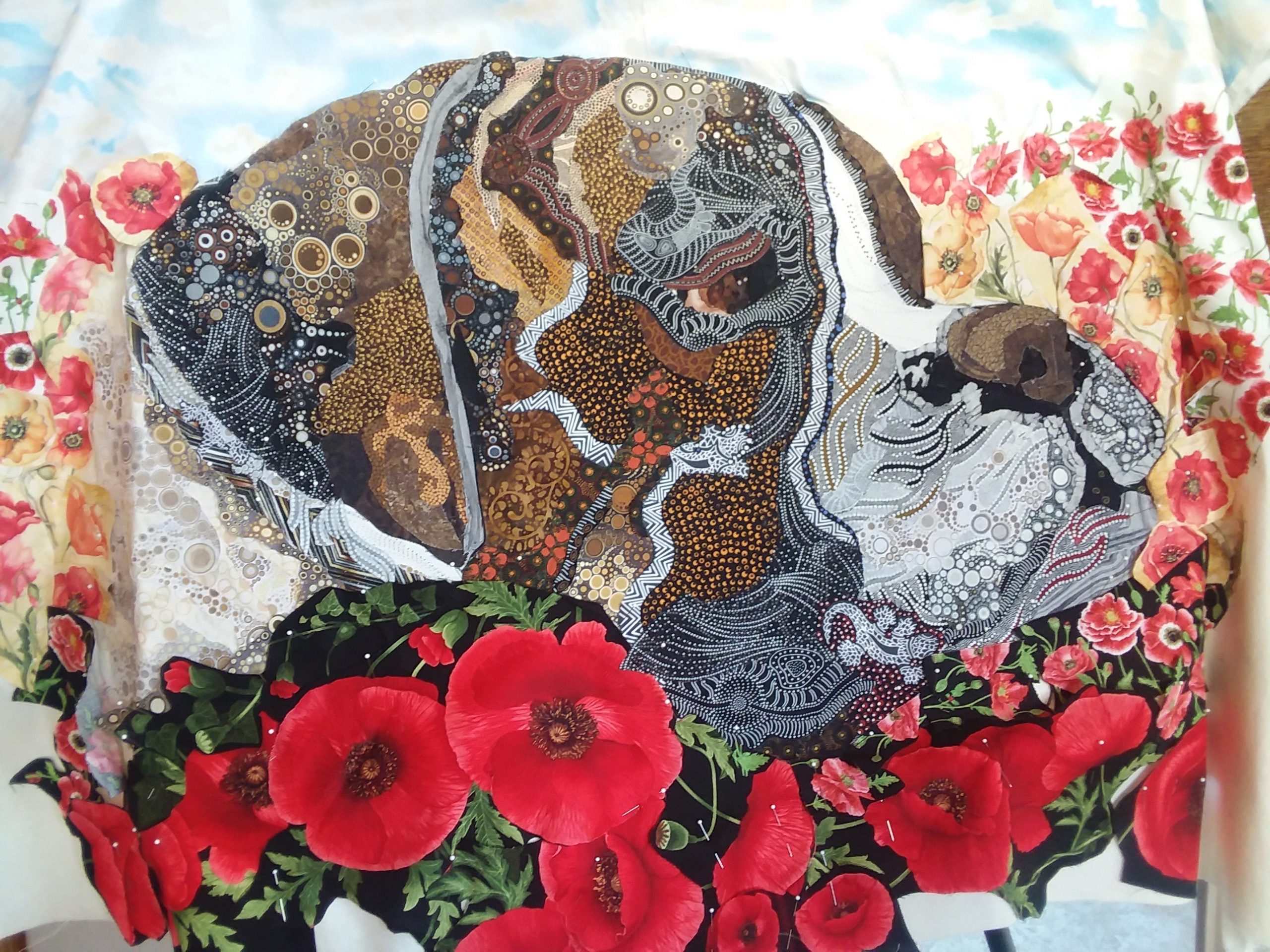
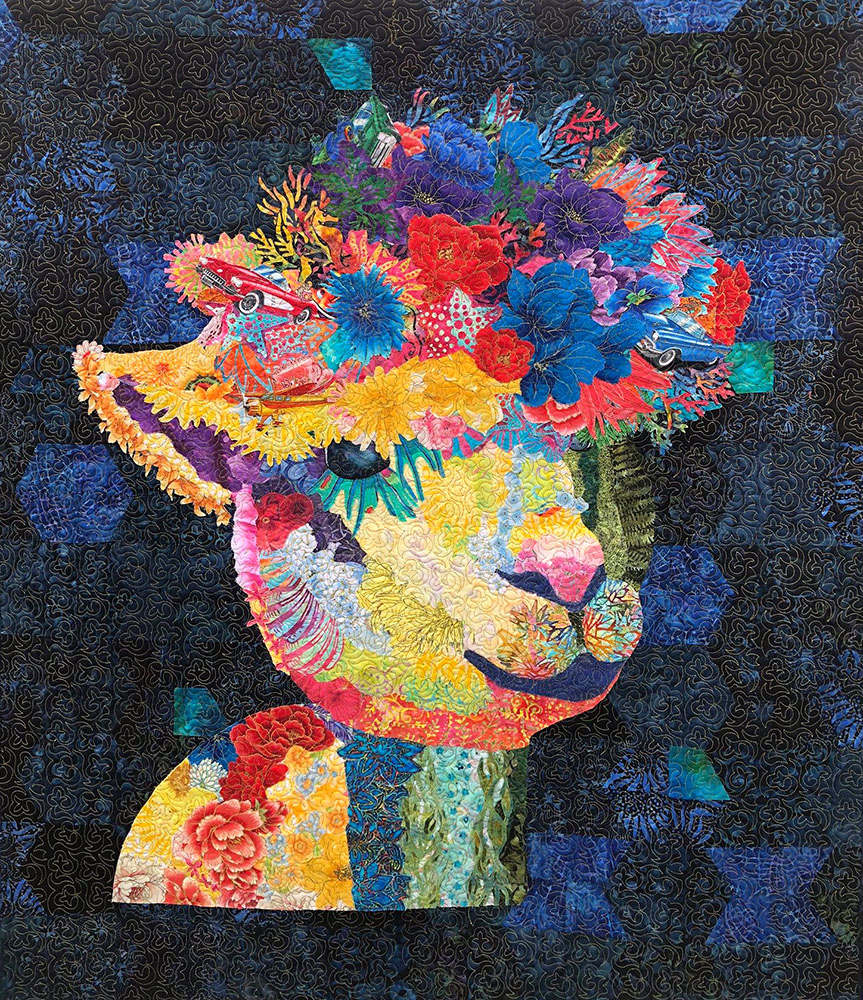
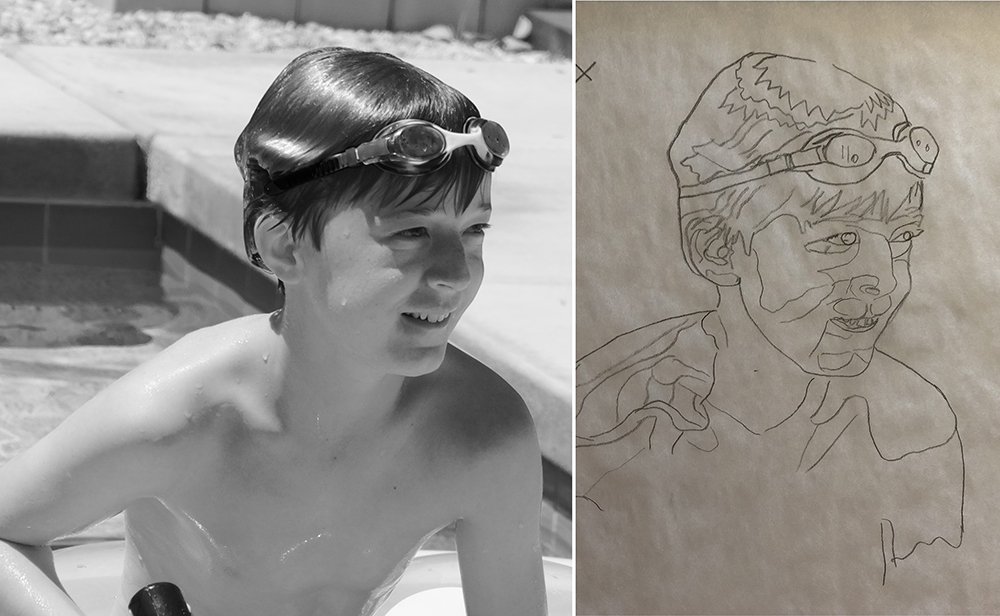
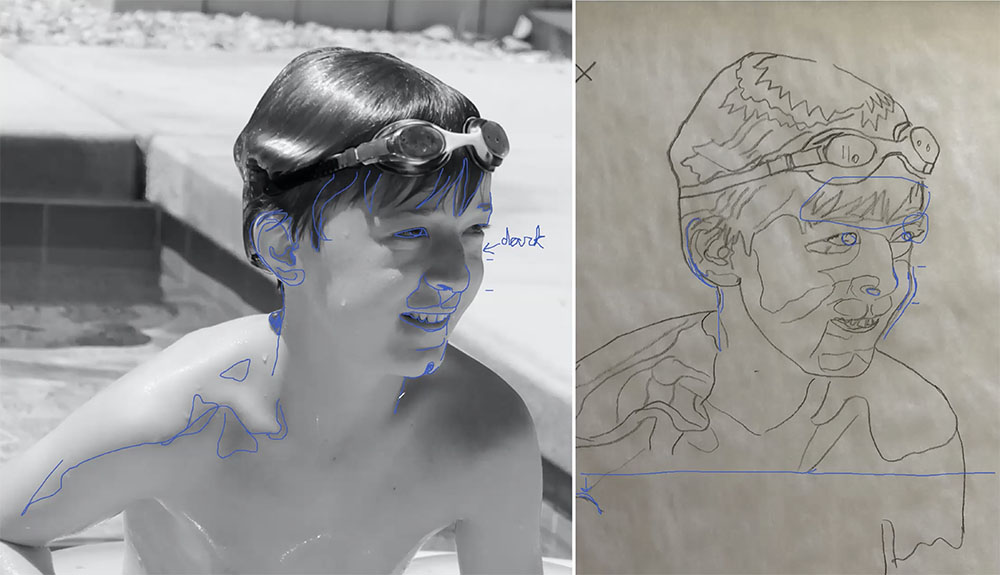
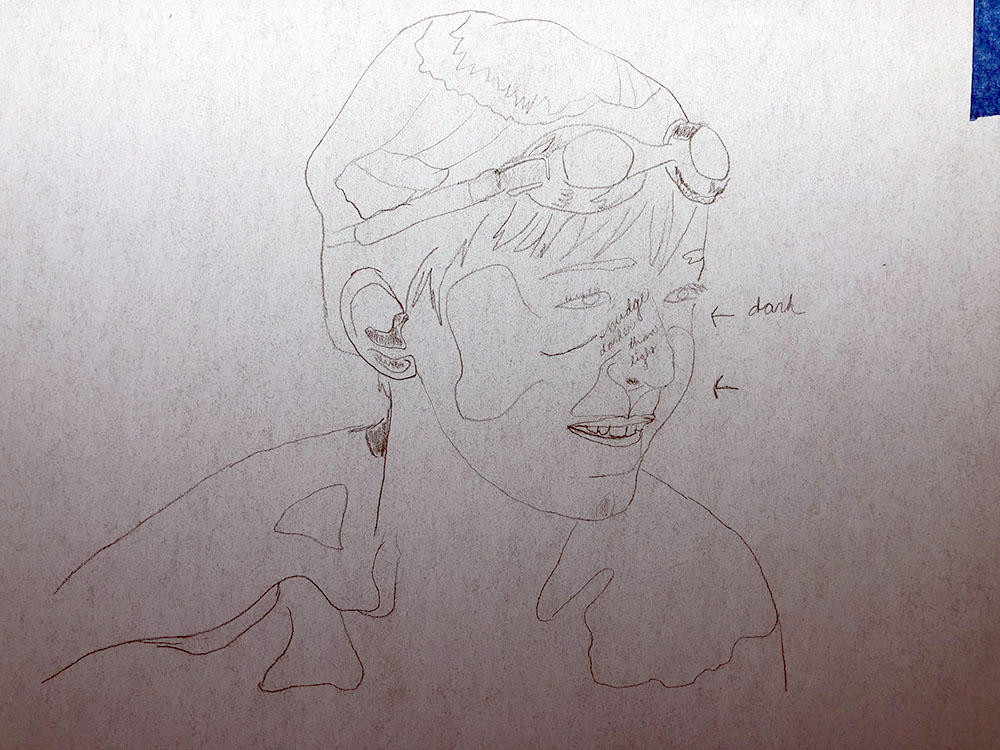
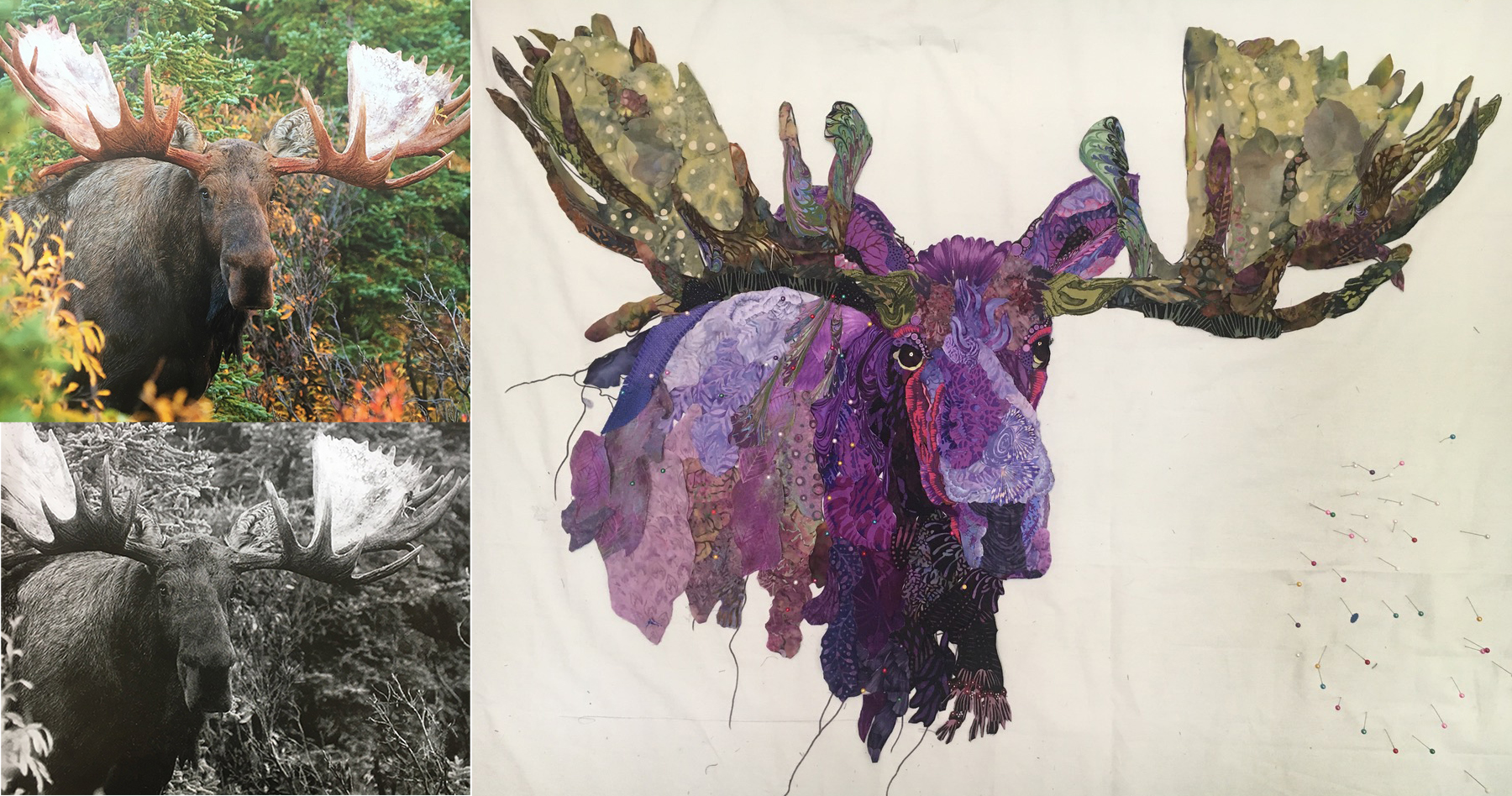
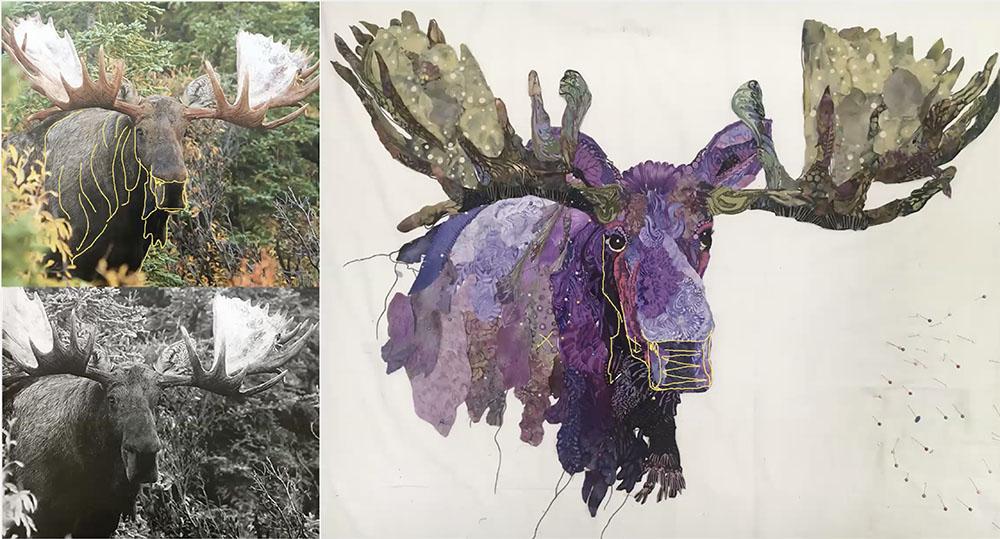
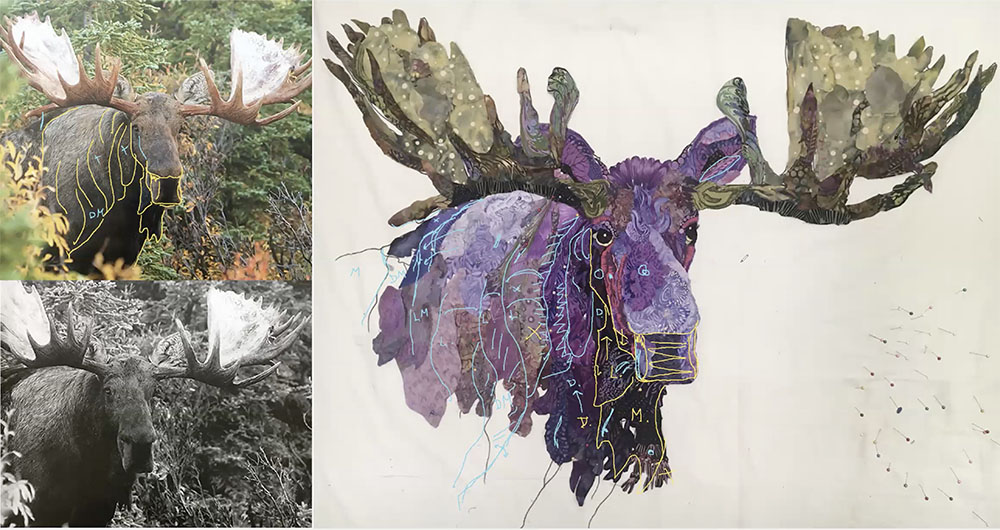
The coaching sessions rock!
I know how invaluable your comments have been on the Patreon Facebook page. When I am ready for consultation on my next collage piece, you can bet I will be signing up for this! 45 minutes one on one with you, Susan? That is quite a luxury!